It's National Traffic Safety Awareness Month! Which apparently means it's time for LAPD - one of the lead implementing agencies for L.A.'s Vision Zero program - to recycle last year's misguided PSA that admonishes a pedestrian for being mowed down by an SUV running a red light at a very high rate of speed.
Pedestrian fatalities have been on the rise in L.A. in recent years, with collisions killing 132 pedestrians in 2021 and another 157 in 2022. The upward trend seen over the last decade has earned the city the grim distinction of being the second deadliest for pedestrians in the country.
All of which means traffic safety awareness on the part of road users is more important than ever. But it is even more important that those enforcing the laws understand them.
The LAPD's PSA suggests it does not. Or, at the very Ieast, that it chooses not to.
This Traffic Safety Awareness Month, let's prioritize the road ahead. Keep distractions at bay and make every step count, whether on foot or behind the wheel. Your attention could be a life saved. Let's make roads safer together! pic.twitter.com/YEujq8MUwH
— LAPD HQ (@LAPDHQ) August 10, 2023
The scene opens with a woman texting her very supportive husband about how she nailed a job interview. As she approaches the curb, she sees she does not have the right of way and pauses.
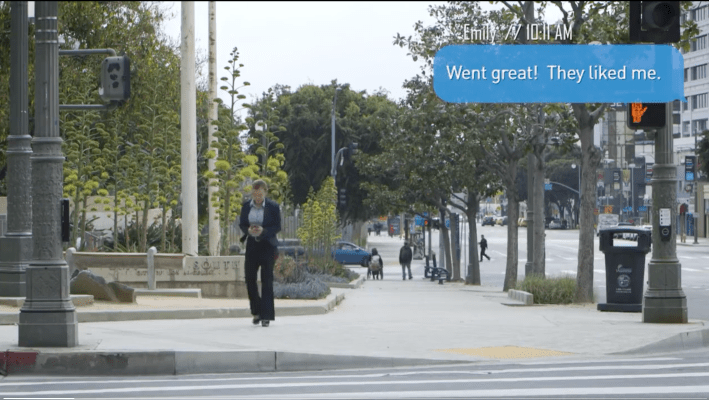
Then, like every good Angeleno, she pushes the beg button at least three times, even after the red light comes on to acknowledge that she has pressed it.
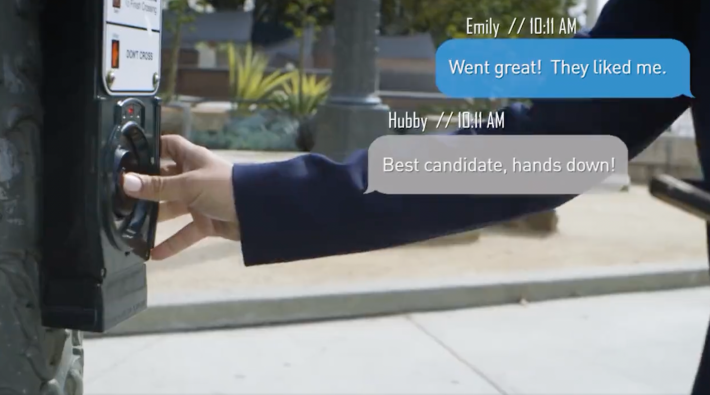
When the light changes and the walk signal comes on, she does not enter the crosswalk for a full three seconds. She is on her phone, true, but she has given the subset of drivers who gun it through yellow lights ample time to clear the intersection. And because she is standing at one of the downtown intersections that was upgraded with a leading pedestrian interval in 2016, it is clear she is being given signal priority.
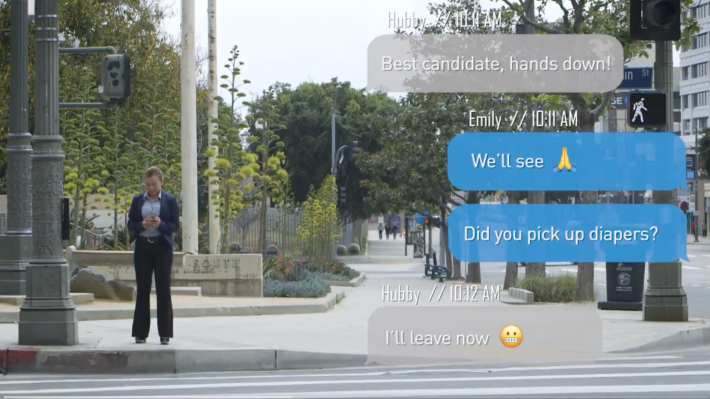
She finally steps into the street, where an SUV immediately descends upon her in the crosswalk.
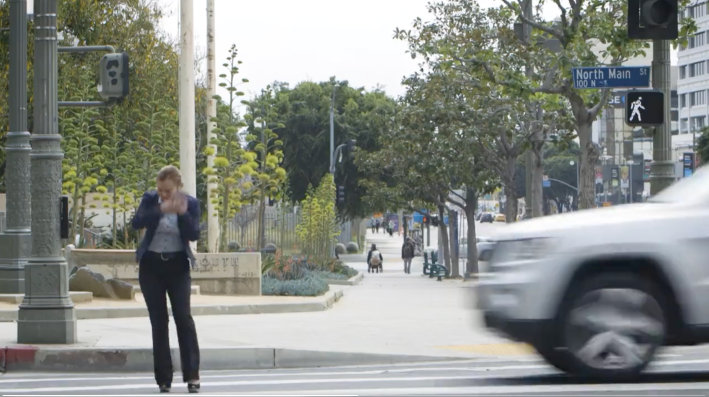
Just before she is pancaked, LAPD rewinds the tape, bringing her back to the curb where she is ... gently made aware of her surroundings by the loving hand of an officer.
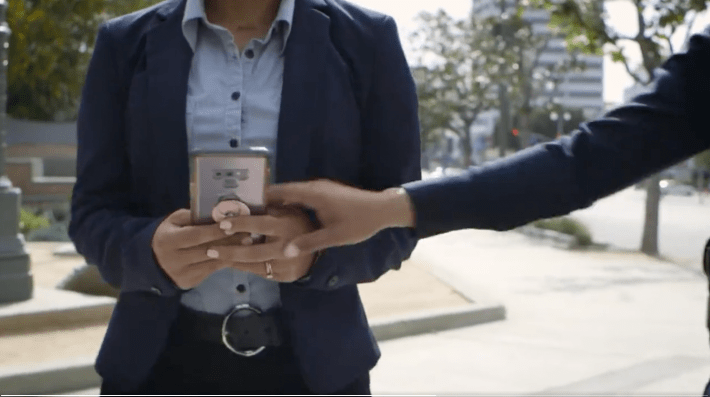
Tragedy at this particular crosswalk averted, the officer then smiles and tells the viewer, "Your loved ones are counting on you to make it home safely. Keep your head up and look at what you're missing."
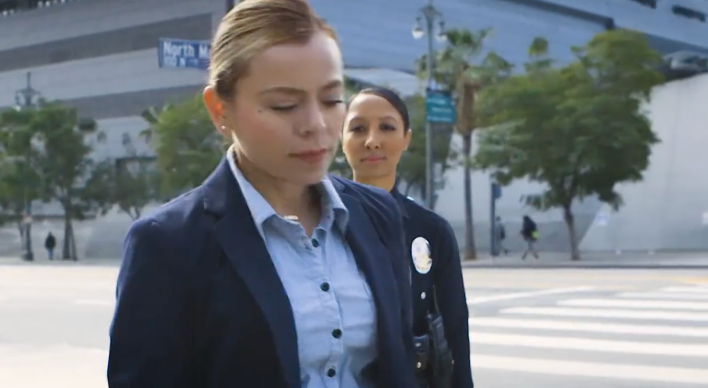
The officer is not referring to her own failure to cite the driver, who has apparently now managed to run the red light unimpeded by penalties or the pesky bodies of pedestrians.
Cue the stock footage of all the good things in life pedestrians can enjoy if they just stop stepping out in front of scofflaw drivers.

_________
The bias against pedestrians is nothing new. It is deeply rooted in law enforcement as well as in American culture, more generally.
A century ago, the origination of "jaywalking" - both the concept and the crime - helped shift the balance of power in favor of cars and relegate pedestrians to nuisance status.
[1948] The careless jaywalker--is L.A.'s no. 1 accident-causer. (Bill Walker - Herald Examiner Collection) https://t.co/7wB9dofR9W pic.twitter.com/Lxii0eJpUj
— LAPL Photos (@laplphotos) September 13, 2022
Pedestrians have been trying to claw back their rightful place in the public space ever since.
Yet, headlines about crashes still tend to refer to the involvement of "cars" not "drivers," absolving drivers of responsibility while blaming pedestrians for being in places drivers might not expect to see them. Even L.A. City Attorney Hydee Feldstein Soto managed to blame a pedestrian for not getting out of the way of a drunk driver during a recent meeting with stakeholders, per video recorded by KNOCK-LA's Jon Peltz (below). And LAPD's own traffic division tweeted just last week that "pedestrian safety is a two-way street" where each bears "equal responsibility" for showing "equal respect."
she also calls it "Zero Vision" and openly telegraphs her annoyance that the pedestrian wasn't able to avoid being hit by a drunk in broad daylight https://t.co/iomXeWD1Z6
— sahra (@sahrasulaiman) April 15, 2023
Legally, that bias has been deeply harmful, giving police license to use traffic-safety-related excuses to disproportionately target Black and brown pedestrians for non-traffic-safety-related reasons. Including when no violation has occurred.
Take, for example, the case of a 2016 incident where LAPD officers broke the hip of a 41-year-old Black pedestrian in South L.A. who they claimed might have jaywalked while holding a small object in his hand. The officers, who were doing "crime suppression," had spotted the man in the crosswalk while the "don't walk" signal was flashing. One speculated the man was holding drugs. The other opined the man held a break-in tool. They decided the possibility that he could have stepped off the curb after the signal began to flash gave them sufficient grounds to jump out on the man. [The code has since been changed to allow people to enter the crosswalk while the signal is flashing.]
He did not get the loving hand treatment seen in the PSA. Instead, not realizing that the man emerging from an unmarked vehicle in the dark and demanding to speak with him was a police officer, the pedestrian panicked and ran. He got about 25 yards before one of the officers delivered the hip-breaking push-tackle. No contraband was found and video surveillance footage later showed he had not committed a traffic violation. But the push-tackle was ruled in policy because, per the Police Commission's findings, the pedestrian who had lawfully crossed the street had been noncompliant.
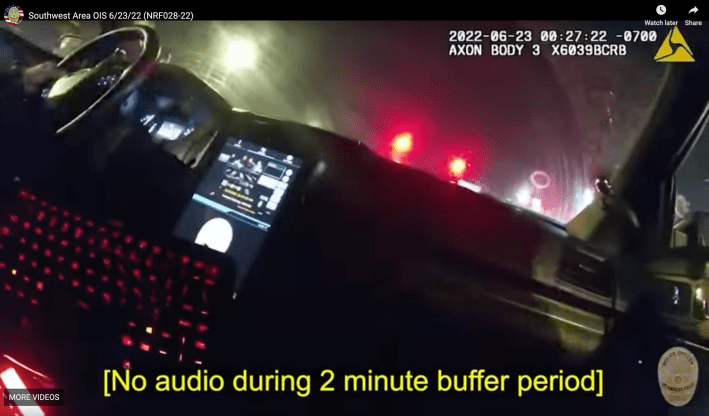
LAPD's pretextual stop policy, implemented last year in response to concerns about biased policing, has likely helped curb some of this kind of harassment. The passage of California's Freedom to Walk Act last year should further redirect police attention from pedestrians to where it belongs: on scofflaw drivers. [Although the Act does not repeal the jaywalking law, it limits the ability of police to stop jaywalkers to situations of imminent danger.]
Still, a real paradigm shift in this regard requires much deeper structural change.
That change may finally be on the way. L.A. is currently awaiting the publication of the local Department of Transportation's (LADOT) report on the reimagining of traffic enforcement in the city.
The report was commissioned during the 2020 protests, in response to calls for armed officers to be removed from traffic stops. As first reported in the L.A. Times, the April draft recommends most enforcement can be done by civilian staff, though it cautions enforcement must be accompanied by major infrastructure interventions that enhance safety for all road users.
How long the realization of that vision will take is anyone's guess. In the meanwhile, we're left with a department whose convoluted messaging telegraphs that it prioritizes driver convenience above all else. And whose presence on the street suggests its officers are not above deploying that driver privilege to send a message to their critics.
Highland Avenue, 5:40 PM:
— Film The Police LA (@FilmThePoliceLA) August 5, 2023
LAPD cop sees me in crossing in crosswalk and almost hits me.
I’ve seen so many people handcuffed for this. pic.twitter.com/m3BFtaKPbH







